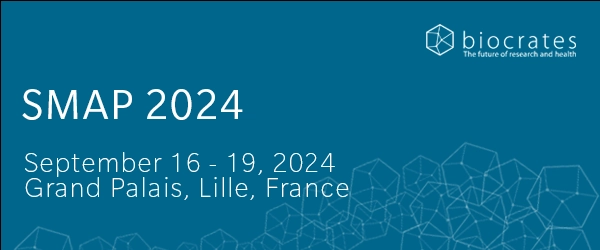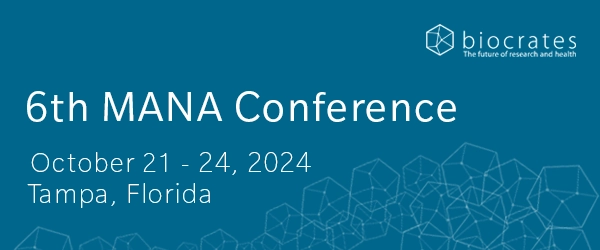Part 2
The potential for metabolic biomarkers to overcome challenges in COVID-19 treatment decisions
In a recent post, we outlined several hypotheses on the clinical relevance of stratification biomarkers for COVID-19. Here, we address the potential for metabolomics to advise clinicians on optimal treatment strategies for patients according to individual disease states. We also discuss the potential for metabolomics to monitor or predict therapeutic efficacy.
Challenge accepted: promising drugs for COVID-19
Despite the novelty of SARS-CoV-2, the severity of COVID-19 and its rapid global spread has already prompted registration of 186 interventional studies at clinicaltrials.gov (24th April 2020), many of which are based on repurposed or experimental drugs. These studies raise hopes that effective treatments will be available in a shorter timeframe than is typical in pharmaceutical R&D.
Several treatment strategies for COVID-19 are currently being tested in clinical trials. One obvious approach is to reduce viral burden by employing antiviral drugs with potential action against SARS-CoV-2. An entirely different approach uses host-based interventions to mitigate the dysregulated immune response, known as “cytokine storm,” observed in severe cases.
Challenge ahead: why biomarkers are urgently needed
Once treatments are approved, their clinical use is typically based on comparisons between their efficacy, side effects, mode of action (MoA), and the impact of supportive care, prompting key questions:
- Can early stratification and treatment prevent severe disease in at-risk patients?
- Can antiviral or immunomodulatory treatments prevent the development of serious adverse events, such as secondary infections, sepsis, need for ventilation, and mortality, and thereby shorten the duration of hospitalization?
- Can certain treatments alter the disease course in the critically ill patient?
- Which form of supportive therapy, such as nutrition, can improve patient outcome?
Due to the urgency of the situation, most of the drugs under investigation have not been developed for SARS-CoV-2, or coronaviruses in general. While the use of repurposed drugs is advantageous in terms of saving time, they also present concerns over safety and efficacy:
- Evidence of anti- SARS-CoV-2 efficacy is scarce at best for many COVID-19 drug candidates.
- A trial for the HIV drug combination lopinavir-ritonavir was ineffective in advanced COVID-19 (Liu et al., 2020) , yet its efficacy in other patient subsets remains unclear.
- In some cases, the mode of action is questionable or unknown.
- For chloroquine and hydroxychloroquine, various MoAs have been proposed, yet definitive proof of their potential in clinical application is lacking (Gbinigie et al., 2020).
- Losartan, an Angiotensin-Converting Enzyme 1 (ACE-1) inhibitor, has cross-reactivity for ACE-2, the point of entry for SARS-CoV-2. Yet, it is also associated with increased ACE-2 expression, causing speculation about the net effect on the susceptibility of host cells to viral entry.
- All investigated drugs can have serious side-effects
- A variety of potential COVID-19 drugs can cause liver damage and/or an increase in liver enzymes. This is especially dangerous in the critical care setting, where impaired liver function is common.
- Nearly 14 % of COVID-19 patients treated with the anti-influenza drug, Favipiravir, exhibited elevated serum uric acid levels, indicating impaired kidney function.
- COVID-19 drug candidates can cause arrhythmia (hydroxychloroquine and losartan) and hypotension (losartan). As arrhythmia is an underlying risk factor for a severe disease course and hypotension frequent in sepsis, these side-effects are serious.
- Anti-IL-6 treatment can lead to a higher incidence of respiratory tract infections. Secondary infections may be associated with adverse outcomes, as evidenced during the H1N1 influenza pandemic, another viral respiratory infection (McIntyre et al., 2018).
- The influence of other factors of patient management are largely unknown. Prior work has shown that personalized nutrition support promotes positive outcome parameters in patients (Schuetz et al., 2019), suggesting that nutrition may impact immune response and recovery.
Overcoming the challenge: the role for metabolic biomarkers
Variability in disease severity and underlying risk factors among COVID-19 patients will present clinicians with complicated decisions regarding future treatment options. A universal treatment seems impractical, as different subsets of patients will likely respond differently. As all drugs have side effects, it will be difficult, but crucial, to tailor treatment regimens based on associated side effects, as well as a patient’s disease severity and pre-existing conditions.
Fortunately, biomarker signatures associated with disease states or impaired biological processes often precede the manifestation of clinical symptoms. The ability to monitor patient biomarkers across treatment regimens could provide an early assessment of treatment efficacy and side effects, allowing alterations in the course of treatment that prevent adverse outcomes.
The relevance of various metabolic pathways in COVID-19 research has been demonstrated elsewhere. Further, the potential for metabolomics to play a key role in overcoming challenges associated with COVID-19 treatment strategy is already being established:
- Metabolomics enables stratification of patients into treatment groups that will yield the greatest likelihood of success.
- Biomarker signatures have been discovered that distinguish COVID-19 patients according to disease severity. While all patients exhibited major reductions in amino acids, activation of the kynurenine pathway in severe patients indicated a stronger immune response. Further, while biomarkers indicated impaired hepatic function in all patients, corresponding changes in the levels of carbohydrates involved in liver detoxification in severe patients suggested exacerbation of their hepatic injury (Shen et al., 2020; D. Wu et al., 2020).
- Metabolic profiles can predict the Angiotensin-I receptor blockade (Pena et al., 2016; M.-H. Wu et al., 2020), which may be related to a decrease in risk for severe disease in patients with hypertension (Liu et al., 2020).
- Metabolomics has a demonstrated ability to monitor therapeutic response and adverse events.
- Metabolomics has revealed biomarker signatures that correspond to COVID-19 disease progression. Similar to the biomarkers that enable stratification of patients by disease severity, progression was accompanied by further disruption of metabolic pathways that indicate immune responses, hepatic damage and cardiac impairment (dysregulation of choline and bile acid metabolism, purine and pyrimidine metabolism, and glycerophospholipid metabolism, to name a few; Shen et al., 2020; D. Wu et al., 2020). Biomarkers that correspond to disease progression have great potential to facilitate predictions of treatment safety and efficacy, by forecasting the onset of future adverse events stemming from disease progression or side effects of a specific treatment.
- Metabolomics has proven effective in predicting responses to a variety of immunomodulatory drugs (Mock et al., 2019), including those investigated in repurposing efforts (Hotze et al., 2014).
- Several drugs in COVID-19 clinical trials share a MoA with previously approved drugs (e.g. lipid inflammatory mediators and IL-6 blockade (Patin et al., 2016), nucleotide metabolites, steroid hormones). Because the MoA was initially described using metabolomics, this confirms the ability to track treatment response using established biomarkers.
- Metabolomics has previously provided biomarkers for sepsis therapy response (Cambiaghi et al., 2017)
- Metabolic profiles have been shown to be sensitive biomarkers for adverse outcomes such as cardio- and hepato-toxicity (Schnackenberg et al., 2016; Slopianka et al., 2017).
- Metabolomics is a well-established tool to study the impact of supportive therapy on patient outcome.
- Nutrition, lifestyle and environmental factors have been shown to influence health outcomes in lung and infectious diseases (Holz et al., 2020; Luise et al., 2019; Lizardo et al., 2019), as well as immune regulation (Jordan et al., 2019).
- Discharged COVID-19 patients were suggested to need further nutrition and care, as tests for SARS-CoV-2 were negative, yet metabolite and lipid imbalances indicated ongoing physiological deficiencies, particularly within hepatic functions (D. Wu et al., 2020).
Summary
Pharmaceutical companies and healthcare professionals are working intensely to discover treatments for COVID-19. As with any new treatment, the ability to demonstrate efficacy and to foresee potential adverse events is paramount. Now more than ever, the implementation of tools that help expedite these processes is crucial, given the urgent need for COVID-19 treatment options, and the corresponding relaxing of some governmental approval processes.
Metabolomics has great potential to provide biomarkers that could help reduce adverse outcomes and the burden on healthcare systems, by predicting response and toxicity, and providing a means to monitor the effectiveness of the chosen course of treatment.
References
Liu Y, Huang F, Xu J, Yang P, Qin Y, Cao M, et al. (2020): Anti-hypertensive Angiotensin II receptor blockers associated to mitigation of disease severity in elderly COVID-19 patients. medRxiv 2020.03.20.20039586; DOI: 10.1101/2020.03.20.20039586
Gbinigie, K., & Frie, K. (2020). Should chloroquine and hydroxychloroquine be used to treat COVID-19? A rapid review. BJGP Open, bjgpopen20X101069.
MacIntyre, C. R., Chughtai, A. A., Barnes, M., Ridda, I., Seale, H., Toms, R., & Heywood, A. (2018). The role of pneumonia and secondary bacterial infection in fatal and serious outcomes of pandemic influenza a(H1N1)pdm09. BMC Infectious Diseases, DOI: 10.1186/s12879-018-3548-0.
Schuetz, P., Fehr, R., Baechli, V., Geiser, M., Deiss, M., Gomes, F., et al. (2019). Individualised nutritional support in medical inpatients at nutritional risk: a randomised clinical trial. Lancet, DOI: 10.1016/S0140-6736(18)32776-4
Shen, B., Yi, X., Sun, Y., Bi, X., Du, J., Zhang, C., et al. (2020). Proteomic and Metabolomic Characterization of COVID-19 Patient Sera. medRxiv, 2020.04.07.20054585.
Wu, D., Shu, T., Yang, X., Song, J.-X., Zhang, M., Wen, L., et al. (2020). Plasma Metabolomic and Lipidomic Alterations Associated with COVID-19. medRxiv, 2020.04.05.20053819.
Pena MJ, Heinzel A, Rossing P, Parving H-H, Dallmann G, Rossing K et al. (2016): Serum metabolites predict response to angiotensin II receptor blockers in patients with diabetes mellitus. J Transl Med, DOI: 10.1186/s12967-016-0960-3.
Wu, M.-H., Lin, C.-N., Chiu, D. T.-Y., & Chen, S.-T. (2020). Kynurenine/Tryptophan Ratio Predicts Angiotensin Receptor Blocker Responsiveness in Patients with Diabetic Kidney Disease. Diagnostics, DOI: 10.3390/diagnostics10040207
Mock A, Zschäbitz S, Kirsten R, Scheffler M, Wolf B, Herold-Mende C et al. (2019): Serum very long-chain fatty acid-containing lipids predict response to immune checkpoint inhibitors in urological cancers. Cancer Immunol Immunother, DOI: 10.1007/s00262-019-02428-3. – see also comment on Biocrates.com
Hotze M, Baurecht H, Rodríguez E, Chapman-Rothe N, Ollert M, Fölster-Holst R, et al. (2014): Increased efficacy omalizumab in atopic dermatitis patients with wild-type filaggrin status and higher serum levels of phosphatidylcholines. Allergy, DOI: 10.1111/ all.12234
Patin F, Baranek T, Vourc’h P, Nadal-Desbarats L, Goossens JF, Marouillat S, et al. (2016): Combined Metabolomics and Transcriptomics Approaches to Assess the IL-6 Blockade as a Therapeutic of ALS: Deleterious Alteration of Lipid Metabolism. Neurotherapeutics, DOI: 10.1007/s13311-016-0461-3
Cambiaghi, A., Pinto, B. B., Brunelli, L., Falcetta, F., Aletti, F., Bendjelid, K., et al. (2017). Characterization of a metabolomic profile associated with responsiveness to therapy in the acute phase of septic shock. Scientific Reports, DOI: 10.1038/s41598-017-09619-x.
Schnackenberg LK, Pence L, Vijay V, Moland CL, George N, Cao Z et al. (2016): Early metabolomics changes in heart and plasma during chronic doxorubicin treatment in B6C3F1 mice. Journal of applied toxicology, DOI: 10.1002/jat.3307.
Slopianka M, Herrmann A, Pavkovic M, Ellinger-Ziegelbauer H, Ernst R, Mally A et al. (2017): Quantitative targeted bile acid profiling as new markers for DILI in a model of methapyrilene-induced liver injury in rats. Toxicology, DOI: 10.1016/j.tox.2017.05.009.
Holz, O., DeLuca, D. S., Roepcke, S., Illig, T., Weinberger, K. M., Schudt, C., & Hohlfeld, J. M. (2020). Smokers with COPD Show a Shift in Energy and Nitrogen Metabolism at Rest and During Exercise. International journal of chronic obstructive pulmonary disease, DOI: 10.2147/COPD.S217474
Luise, D., Bertocchi, M., Motta, V., Salvarani, C., Bosi, P., Luppi, A., et al. (2019). Bacillus sp. probiotic supplementation diminish the Escherichia coli F4ac infection in susceptible weaned pigs by influencing the intestinal immune response, intestinal microbiota and blood metabolomics. Journal of Animal Science and Biotechnology, DOI: 10.1186/s40104-019-0380-3.
Lizardo, K., Ayyappan, J. P., Ganapathi, U., Dutra, W. O., Qiu, Y., Weiss, L. M., et al. (2019). Diet Alters Serum Metabolomic Profiling in the Mouse Model of Chronic Chagas Cardiomyopathy. Disease Markers, DOI: 10.1155/2019/4956016.
Jordan, S., Tung, N., Casanova-Acebes, M., Chang, C., Cantoni, C., Zhang, D., et al. (2019). Dietary Intake Regulates the Circulating Inflammatory Monocyte Pool. Cell, DOI: 10.1016/j.cell.2019.07.050.







